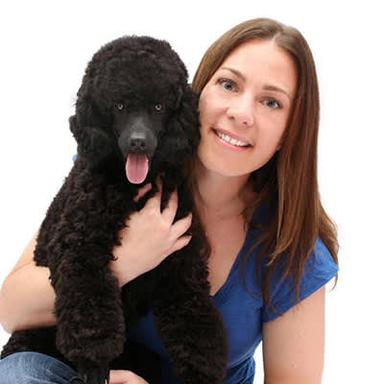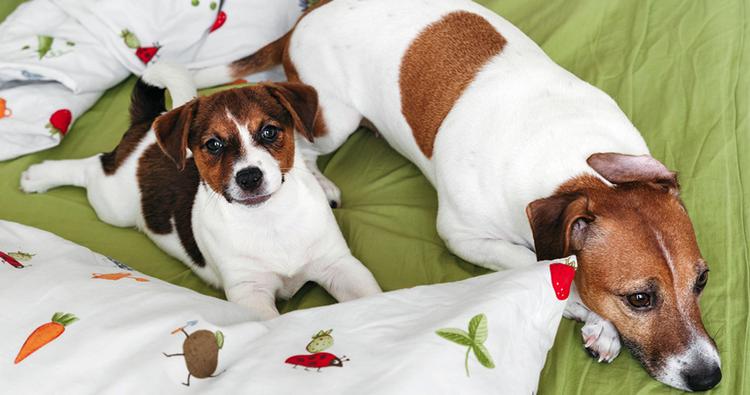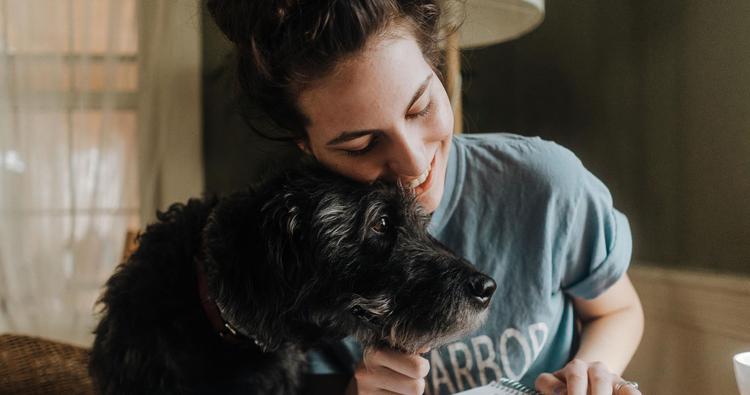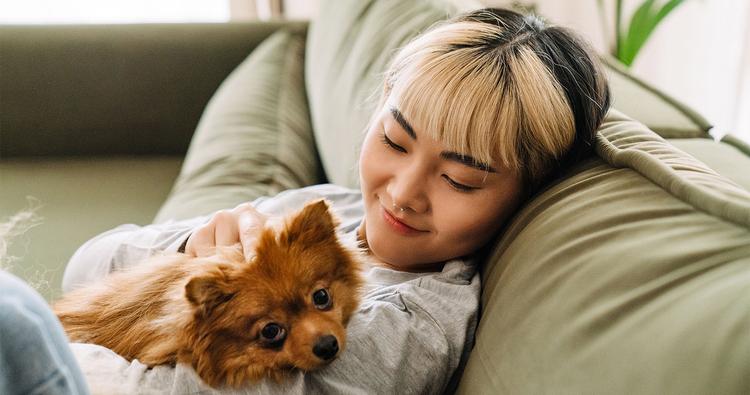How Much Space Does a Dog Need to Be Happy?
Dogs need space to live their best lives, but how much is enough?
Dogs need space to live their best lives, but how much is enough?
by Jackie Brown, | March 6, 2024

Boris Jovanovic / Stocksy
When choosing a dog to adopt, there’s one thing you’ll want to consider first: space. Some dogs do fine in smaller spaces like apartments and condos, but others need a good amount of space inside the home and yard to be happy.
In general, active breeds and very large breeds need more space to run and roam. Smaller breeds and those that are naturally low-energy need less space. Before bringing home a new dog, consider how much indoor dog space and outdoor dog space you have, and choose a dog that will be happy living in that amount of space.
Some dogs need a lot of space because of their physical size and exercise requirements, while other dogs might be happy in a studio. How much space a dog will need really depends on their size, energy level, and behavioral tendencies. In reality, dogs need space to thrive — at least 300 square feet (think the size of a studio apartment), but there’s no hard and fast rule for the amount of space needed to make a dog happy.
Whether you live in a huge house in the country, a medium-sized home in the suburbs, a smaller apartment or condo, or even a tiny studio, you can find a dog who will be happy in your space. Some of the factors that influence an individual dog’s spatial requirements include:
Some breeds are known to need more space, both inside and outside. Giant breeds, like the Great Dane and Mastiff, need more space simply because they are so massive, but even some small breeds, like the Jack Russell Terrier, are so energetic they need lots of space indoors and out. Tiny toy breeds, like the Maltese or Yorkshire Terrier, need less space, so they are great for people living in apartments, but even some larger breeds, like the Greyhound, are naturally sedentary and happy to live in small spaces.
In general, puppies and younger dogs need more space as they tend to be more active. This is especially true for large breeds, like Labrador Retrievers and German Shepherd Dogs, as well as very active breeds like Border Collies and Vizslas. Conversely, senior dogs tend to slow down as they age. If an older dog is content to sleep or relax most of the day, they can usually live in smaller spaces, even if they are large.
Individual dogs vary in their energy levels and exercise needs, regardless of breed. Very active dogs are almost always on the move. They need more space inside and outside so they don’t feel cramped. Small dogs, toy breeds, and naturally lazy larger dogs are usually comfortable in any space, whether large or small.
Dogs with disabilities sometimes have different space needs. For instance, if a dog is disabled and uses a doggie wheelchair, it’s best to have more space so there’s plenty of room to maneuver. Arthritic dogs and blind dogs might feel more comfortable in smaller spaces, which can be easier to navigate.
A dog crate is an excellent tool that helps with house training and serves as a safe and comfortable space for dogs to sleep at night or to relax when you’re not home for a few hours. It’s important to make sure the crate is the right size for your dog — big enough to be comfortable but not so big that the dog can use one end to sleep in and the other for a toilet.
To find the right size crate for your dog, measure your dog’s length from nose to tail, and their height from the top of their head to the bottom of their paws. Keep in mind that growing puppies will need larger crates as they get bigger. To make it easier and keep costs down, you can buy a crate that comes with a divider inside that allows you to gradually give your puppy more space as they grow. Follow these tips for choosing the right size crate for your dog:
Choose a crate that is taller than your dog’s measurement from floor to the top of the head. Your dog should be able to sit and stand inside the crate without needing to slouch or lower their head.
The crate should be just slightly longer than the total length of your dog from the nose to the tip of the tail. Your dog should be able to lie down comfortably without needing to curl up in a tight ball.
The crate should be wide enough to comfortably accommodate your dog while sitting, standing, and lying down. It’s OK if the dog’s body touches the sides of the crate when lying down, but your dog should not be crammed in.
It’s important to note that crates are wonderful tools when used properly, but crates are not places to keep your dog all day long. If you will be away from the home for more than three or four hours, create a larger safe space for your dog to hang out, or arrange for a caregiver to come and take your dog out for a long walk or play session in the middle of the day.
Whether you live in a large house or small apartment, bringing a new dog home is a big adjustment for everyone. Do as much as you can ahead of time to make the process smooth. Before your new dog comes home, stock up on all the supplies you need, including food, treats, feeding bowls, leash and collar, crate, bed, toys, brushes, and other grooming supplies. Set things up so you can show your dog where everything is when they first arrive.
It’s also a good idea to identify where you want your dog to go pee, and come up with the house rules regarding the dog, such as what rooms are off limits or whether your dog will be allowed on beds and couches. Your dog will feel more comfortable with your family if you show them what’s allowed from the very beginning and stay consistent.
When you first bring your dog home, keep them on a leash and walk them around the house so they can see where the eating, sleeping, and play spaces are. Also, take your dog for a tour around your yard and go for a walk around the neighborhood to acquaint them with their new surroundings.
Above all else, give your new dog plenty of time to settle in without any pressure. Some dogs are shy or nervous when they first come to a new environment with a new family. Try to resist the urge to smother your new dog with too much affection or excitement. It can take rescue dogs a few days or weeks to relax and get used to their new homes, and that is when you will really see their personality shine.
Make crate training positive. Place a soft blanket, a toy or chew, and a few treats inside the crate and encourage your dog to investigate. Leave the door open so your dog can enter and leave at will. Eventually, work up to closing the door and leaving your dog inside for gradually longer amounts of time.
The golden rules for house training your new dog are supervising your dog indoors, taking them to a designated potty spot regularly, rewarding with praise or treats for going potty in the desired place, cleaning up accidents promptly and thoroughly, and never punishing your dog for potty mistakes.
Stock up on food and other dog supplies; set up your new dog’s crate, beds, and food and water bowls; and figure out a potty spot. When you bring home your dog, show them where to find everything, then let them explore your home at their own pace. Keep your voice and body calm while your new dog adjusts.

Jackie Brown lives in sunny Orange County, CA, where she works as a freelance writer and editor. When she’s not on deadline, you can find her paddling her outrigger canoe in the Pacific Ocean or hiking in the foothills with her miniature poodle and two young boys.

Adoption Advice

Adoption Advice

Adoption Advice

Adoption Advice
Preparing for a new puppy with kids? Read our guide for insights on creating a harmonious bond between your children and new puppy.

Adoption Advice
Curious about dog-proofing? Learn how to make your home safe and enjoyable for your pup.